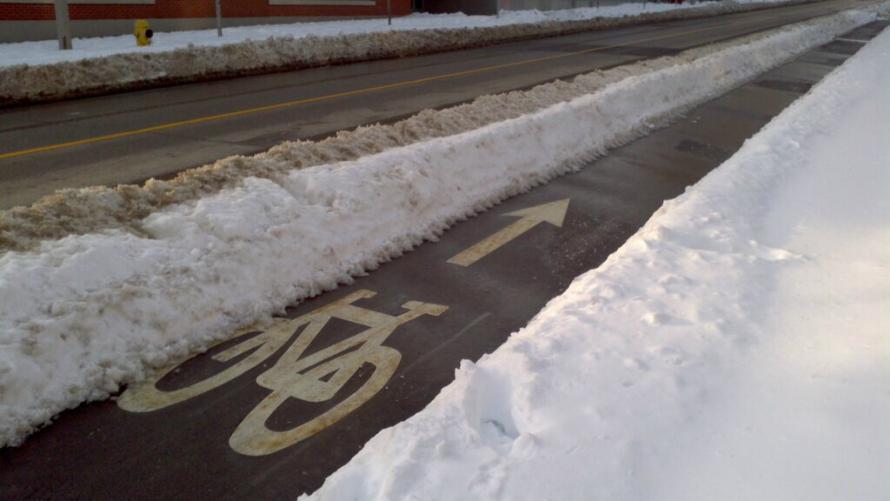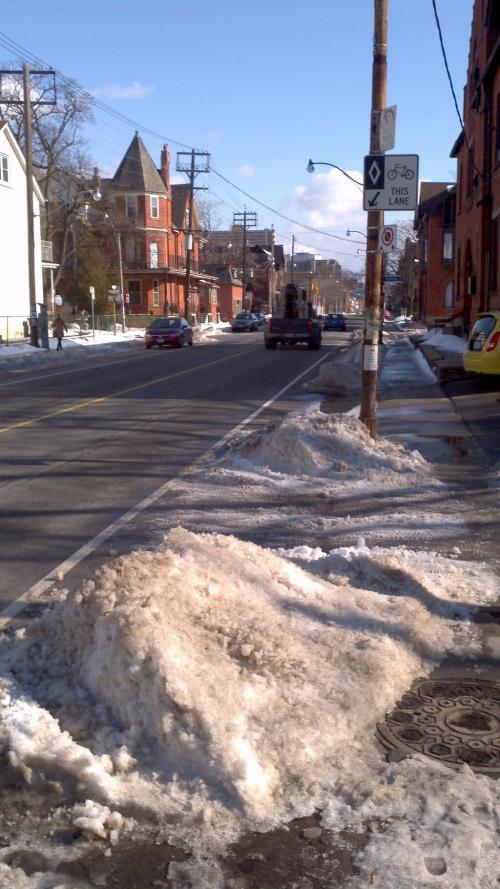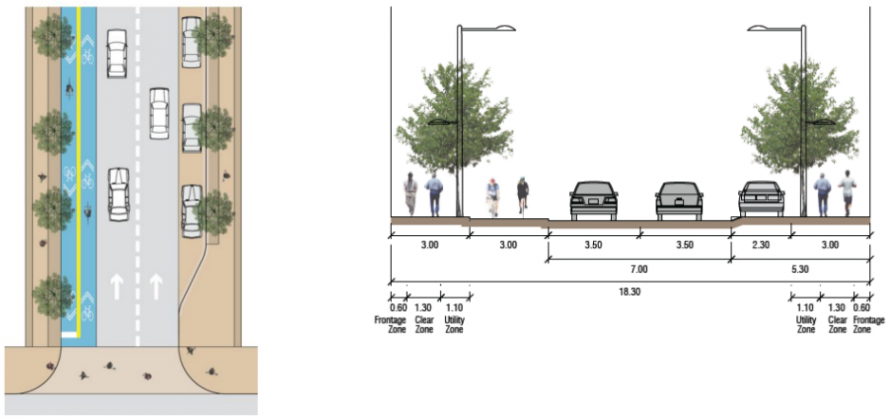In 2008 and 2009, the City of Toronto approved the installation of 13 contraflow lanes, most as a part of the West End Bikeways consultation. The contraflow lanes, however, have been stalled for almost 5 years, because the City of Toronto legal department was concerned that the provincial Highway Traffic Act does not allow contraflow lanes on designated one-way streets. With last week's consultation of a contraflow lane on Shaw Street, we have finally overcome that bureaucratic hurdle.
This was a made-in-Toronto problem. The City of Ottawa interpreted the Highway Traffic Act differently and continued to install contraflow bike lanes. Meanwhile in Toronto, a staff person in Transportation Services made an issue of contraflow bike lanes, effectively stopping the project from the inside (that's how I heard the story at least). Funnily, Toronto has existing contraflow lanes on Montrose and Strathcona streets that weren't an issue for anyone, not in their respective communities nor for the City (photo at the top is of Strathcona). I assume that only someone who is full of bile and spite and thought this would somehow being their small life meaning would raise a stink about contraflow lanes.
We would still be stuck in the purgatory of approved-but-cannot-install bike lanes if it weren't for the hard work of Cycle Toronto volunteers and staff working with provincial and city allies. John Taranu of Ward 22, Laura Pin of Ward 14 and others campaigned successfully to get this changed. The Cycle Toronto volunteers reached out to Councillor Mike Layton, Dr. Eric Hoskin, MPP for St. Paul, and Jonah Schein, MPP for Davenport to push for a change in the law or a clarification that would enable Toronto to continue building contraflow lanes.
Finally, this last fall the Minister of Transportation, Bob Chiarelli, announced that provincial staff would meet with City staff to come to a legal resolution. The result of that meeting, in short, is that Toronto can now make streets two-ways for bicycles, but one-way for other vehicles. In practice, this won't change the way contraflow lanes look or work from existing ones. A glass half-empty look on this would declare that we're back to square one, but I prefer to think that being on a much surer legal footing is better than square zero.
Since the public will see no real difference on the ground, it's probably not interesting to most people on how the City and provincial staff came to a resolution. For those who are, here's the longer explanation that I received from the Cycling Unit on how they reached a convoluted agreement on reading the Highway Traffic Act. The streets will become two way, with one way restricted to bicycles, which municipalities are allowed to do. They are also allowed to use the existing signage to reduce confusion.
What we negotiate will allow us to install the same markings and signage we have used for the City's existing contra-flow bicycle lanes. The on-street installation will be the same, only the back end legislation will change. The legal mechanism used to do this is the provision that the municipality may place restrictions on individual lanes.
The bicycle lane will be restricted for the use of bicycles only.
Bicycles will be restricted to travelling in one-direction only in that bicycle-only lane.
The adjacent lane has no vehicle class restriction, and may be used by all road users, however this lane will have a lane restriction in it, to govern the direction of travel for that lane.
In effect what this means is that instead of having a one way street with an exception for bicycles, the street will be a two way street for bicycles, with lane restrictions in both directions so that only one-way use is possible for other vehicles.A key issue for us was signage. In order for the general public to interpret and use the facility correctly, we felt it was critically important to NOT take down the one-way arrow signs on street where these types of facilities are installed.
The MTO agreed that we may maintain the one-way arrow signs to communicate that the general purpose lane is restricted for one-way use. A "bicycles excepted" tab may be used to further communicate that the although it is one-way for cars (or any road user other than a cyclist), the street is two ways for bicycles, as the cyclist may use the bicycle-only lane in the other direction.
We will have to send a housekeeping report to PWIC, to change over legislation of our existing Toronto "contra-flow" bicycle lanes, and can now start to program "contra-flow" bicycle lanes which have not yet been installed using this new legislative format.




